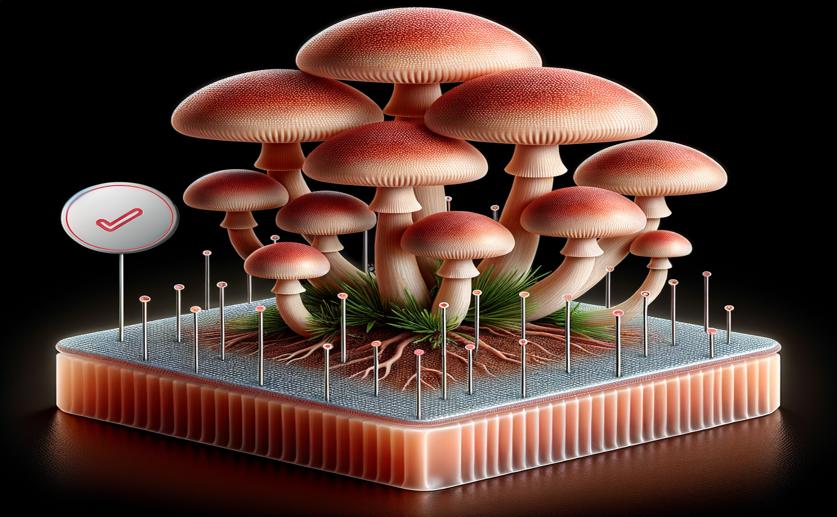
Fighting Skin Cancer with a Mushroom-based Microneedle Patch
Jim Crocker
16th June, 2024

Image Source: Natural Science News, 2024
Key Findings
- Researchers in Taipei, Taiwan, found that a water-soluble glucan (WSG) from the mushroom Ganoderma lucidum can reduce melanoma cell viability and movement
- WSG downregulates EMT-related transcription factors like Snail and Twist, which are crucial for cancer metastasis
- In mice with melanoma tumors, WSG significantly suppressed tumor growth, showing its potential as a therapeutic agent
References
Main Study
1) Targeting TGFβ receptor-mediated snail and twist: WSG, a polysaccharide from Ganoderma lucidum, and it-based dissolvable microneedle patch suppress melanoma cells.
Published 1st October, 2024 (future Journal edition)
https://doi.org/10.1016/j.carbpol.2024.122298
Related Studies
2) Ganoderma lucidum: Persuasive biologically active constituents and their health endorsement.
3) Increased dosage and amplification of the focal adhesion kinase gene in human cancer cells.
Journal: Oncogene, Issue: Vol 18, Issue 41, Oct 1999
4) Biocompatible nanoparticles and vesicular systems in transdermal drug delivery for various skin diseases.



 15th March, 2024 | Greg Howard
15th March, 2024 | Greg Howard